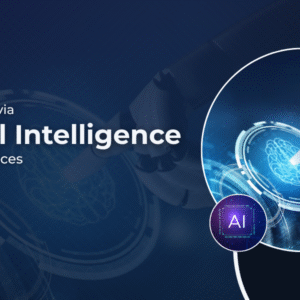Introduction
In recent years, computer vision has emerged as one of the most transformative fields in technology, revolutionizing industries from healthcare to automotive, retail, and security. But what exactly is computer vision? How does it work, and why is it becoming so important? This article dives into the fundamentals of computer vision, explores its real-world applications, and sheds light on the technology behind it.
Definition
Computer vision is a subfield of artificial intelligence and computer science that focuses on enabling machines to “see,” interpret and make decisions based on visual data – such as images or video. By combining techniques from image processing, machine learning and pattern recognition, computer vision systems can perform tasks like object detection, facial recognition, image segmentation and scene understanding. These capabilities power applications ranging from autonomous vehicles and medical imaging diagnostics to augmented reality and quality control in manufacturing.
What is Computer Vision?
Computer vision is a multidisciplinary field that enables computers and systems to interpret and understand visual information from the world – such as images and videos – just like humans do. It involves teaching machines to “see” by analyzing pixels and patterns to extract meaningful data. Unlike traditional programming, where explicit rules dictate behavior, computer vision relies heavily on machine learning and deep learning to enable systems to recognize objects, classify images, detect movement, and even understand context.
In essence, computer vision attempts to replicate the human visual system’s capabilities, enabling machines to identify objects, track motion, recognize faces, read text, and perform other visual tasks that humans do effortlessly.
Core Concepts of Computer Vision
To understand how computer vision works, it’s important to grasp some key concepts:
Image Processing:
At the base level, computer vision starts with image processing, which involves techniques to enhance and manipulate images. This can include adjusting brightness, contrast, filtering noise, edge detection, and image segmentation – dividing an image into meaningful parts to make it easier to analyze.
Feature Extraction:
Once the image is processed, the next step is to extract features—distinctive attributes or patterns within an image, such as corners, edges, textures, or shapes. Algorithms use features as hints to determine what is contained in an image.
Object Detection and Recognition:
With features extracted, computer vision systems can perform object detection (locating objects within an image) and recognition (identifying what those objects are). This is fundamental for applications like facial recognition or autonomous vehicles identifying pedestrians.
Classification:
Classification involves assigning a category or label to an object or scene based on its features. For example, categorizing an image as “dog,” “cat,” or “car.” This is usually done through training machine learning models on large labeled datasets.
Deep Learning and Neural Networks:
Modern computer vision heavily relies on deep learning, particularly convolutional neural networks (CNNs), which are designed to automatically and adaptively learn spatial hierarchies of features from input images. CNNs have drastically improved the accuracy and efficiency of image recognition tasks, allowing for real-time, high-precision applications.
How Does Computer Vision Work?
The general workflow of a computer vision system can be broken down into several steps:
Step 1: Data Acquisition
The system captures visual data using cameras, sensors, or video feeds. The quality and type of data are crucial, as they directly affect the system’s performance.
Step 2: Preprocessing
Raw images often contain noise or unwanted information. Preprocessing prepares these images by resizing, normalizing colors, or removing distortions to improve the accuracy of subsequent analysis.
Step 3: Feature Extraction
The system analyzes images to identify patterns or key features. For traditional methods, this might involve algorithms like SIFT (Scale-Invariant Feature Transform) or HOG (Histogram of Oriented Gradients). In deep learning, this step is embedded within the CNN layers, which learn hierarchical features automatically.
Step 4: Model Training
Using labeled datasets, the system learns to associate patterns with specific labels or outcomes. This involves training machine learning or deep learning models by feeding them large volumes of annotated images until they can generalize well on new, unseen data.
Step 5: Prediction and Interpretation
Once trained, the model can predict and interpret new images, identifying objects, recognizing faces, reading text (OCR), or detecting anomalies.
Step 6: Post-processing
The raw output of the model may require further refinement or contextual analysis, such as filtering false positives or combining results over multiple frames in video analysis.
Real-World Applications of Computer Vision
The potential of computer vision extends across numerous industries and everyday uses:
Healthcare:
Computer vision aids in medical imaging diagnostics by analyzing X-rays, MRIs, and CT scans to detect diseases like cancer or fractures more accurately and quickly than traditional methods. It also supports surgical robotics and telemedicine.
Automotive Industry:
Self-driving cars use computer vision to perceive the environment—detecting lanes, traffic signs, pedestrians, and other vehicles—to navigate safely. Driver assistance systems rely on vision for features like automatic braking or lane-keeping.
Retail:
Computer vision is used by retailers to improve customer satisfaction, avoid loss, and manage inventory. For example, Amazon Go stores employ computer vision to enable checkout-free shopping, tracking what customers pick up in real-time.
Security and Surveillance:
Facial recognition systems are widely used for security purposes in airports, stadiums, and law enforcement. Surveillance cameras equipped with computer vision can detect unusual activities or identify suspicious individuals in crowds.
Agriculture:
Computer vision enables precision agriculture by monitoring crop health, detecting pests, and estimating yields through drone or satellite imagery, helping farmers make data-driven decisions.
Manufacturing and Quality Control:
Automated visual inspection systems identify defects or inconsistencies in products on assembly lines, reducing human error and increasing efficiency.
Social Media and Entertainment:
Photo tagging, augmented reality filters, and content moderation on social media platforms rely on computer vision to identify people, objects, and inappropriate content.
Challenges and Future Trends
- Data Quality and Quantity: Training effective models requires large, diverse, and well-labeled datasets, which can be expensive and time-consuming to collect.
- Complex Environments: Real-world conditions like varying lighting, occlusions, and camera angles can complicate accurate recognition.
- Bias and Ethics: Facial recognition systems have raised concerns about privacy and bias, especially regarding race and gender.
- Computational Costs: Deep learning models demand significant processing power, which can limit their deployment on edge devices.
Looking ahead, computer vision is expected to integrate more deeply with other AI fields like natural language processing and robotics. Advances in unsupervised learning and synthetic data generation may reduce the reliance on labeled datasets. Additionally, edge computing will enable faster and more private vision applications on devices like smartphones and drones.
Growth Rate of Computer Vision Market
According to Data Bridge Market Research, the global computer vision market is expected to reach USD 28.86 billion by 2032, growing at a compound annual growth rate (CAGR) of 8.32% from its estimated USD 15.22 billion in 2024.
Learn More: https://www.databridgemarketresearch.com/reports/global-computer-vision-market
Conclusion
Computer vision is transforming the way machines interact with the visual world, making it possible for computers to “see” and interpret their surroundings in ways once thought to be exclusively human. From improving healthcare outcomes to enabling autonomous vehicles and enhancing retail experiences, its applications are vast and growing rapidly. Understanding the underlying concepts and mechanisms of computer vision not only reveals its potential but also helps us appreciate the challenges and ethical considerations we must address as this technology continues to evolve.









